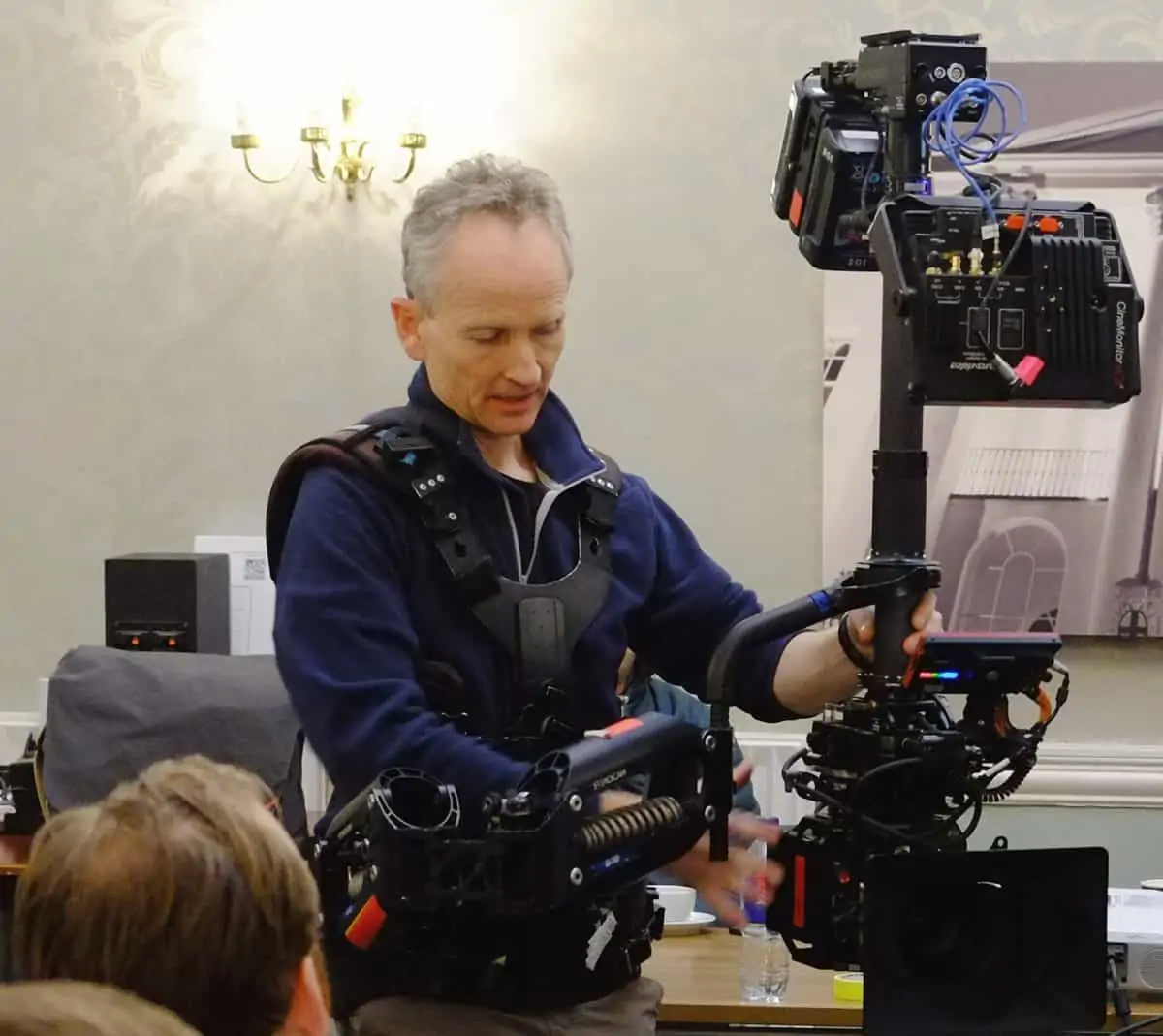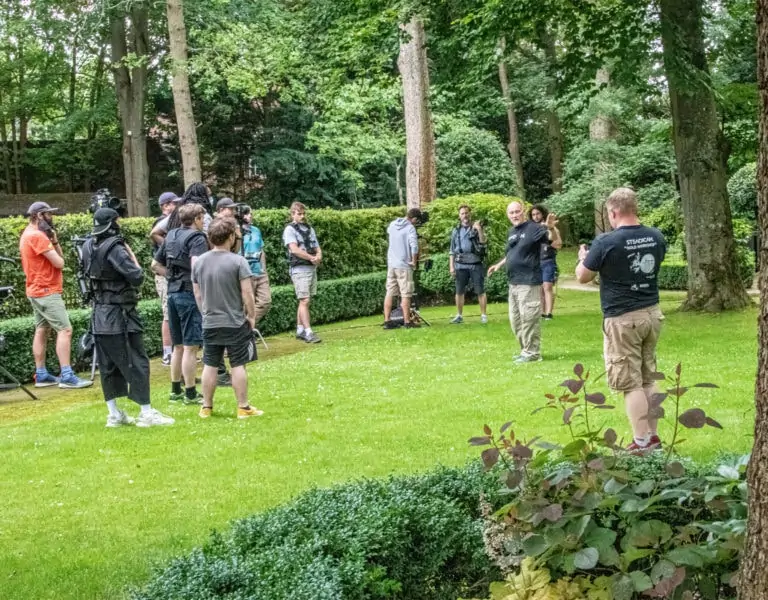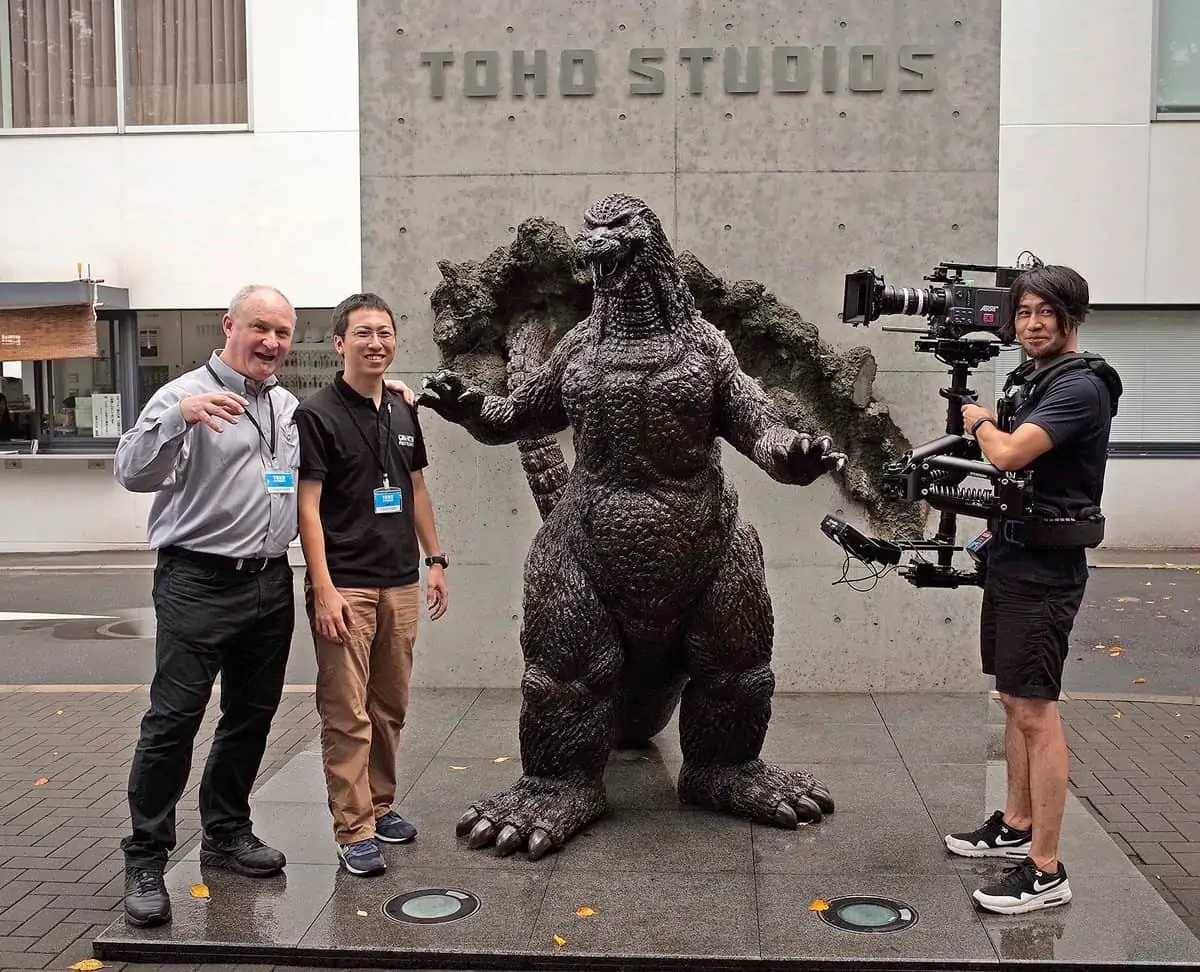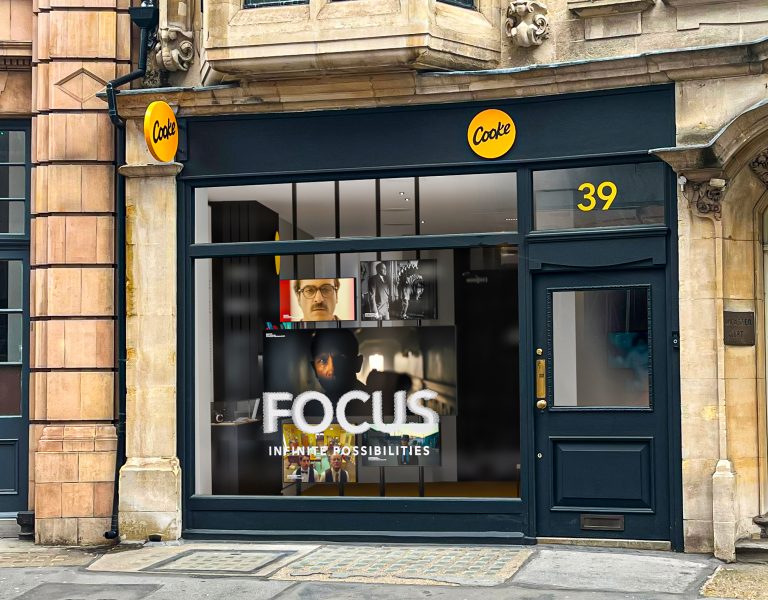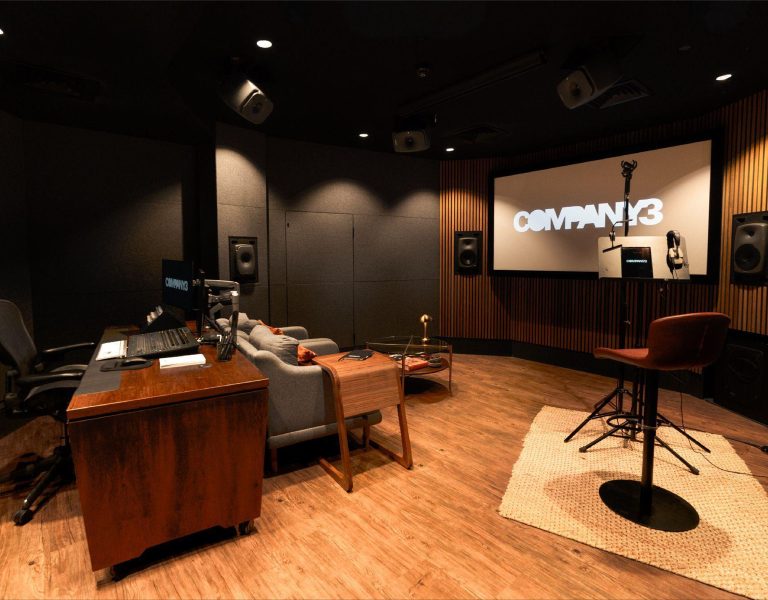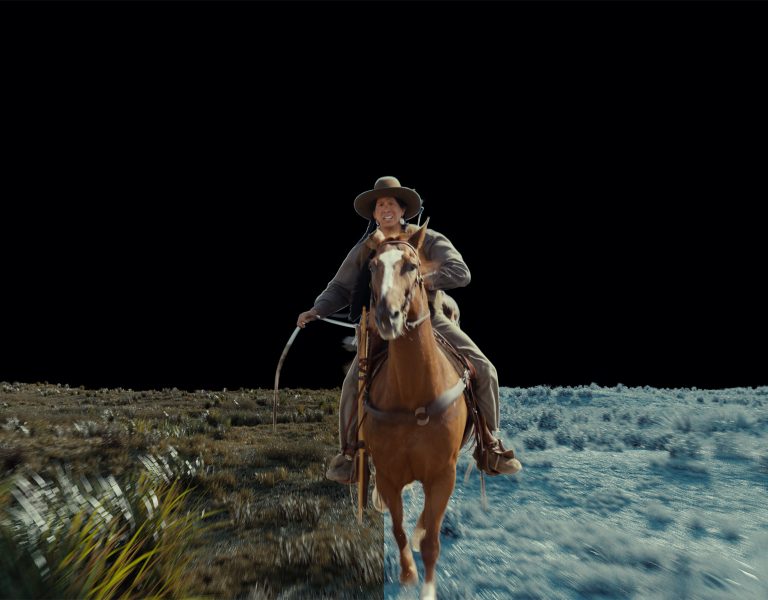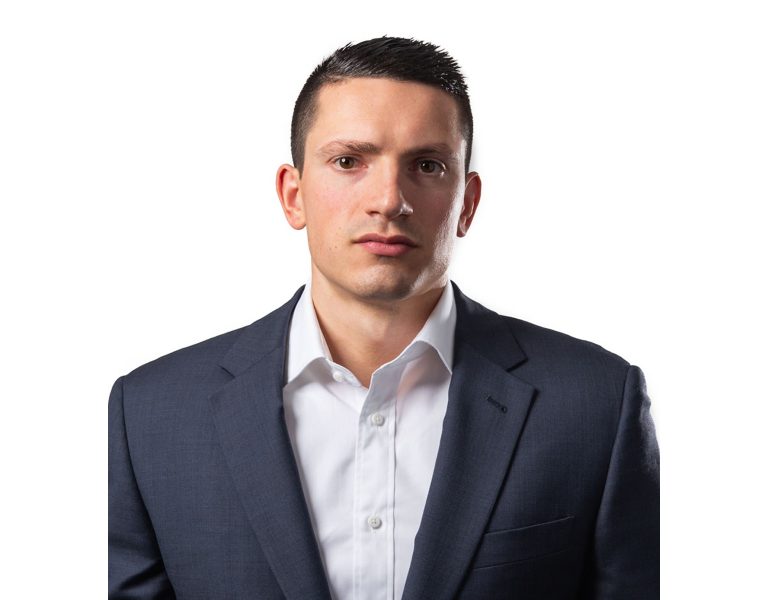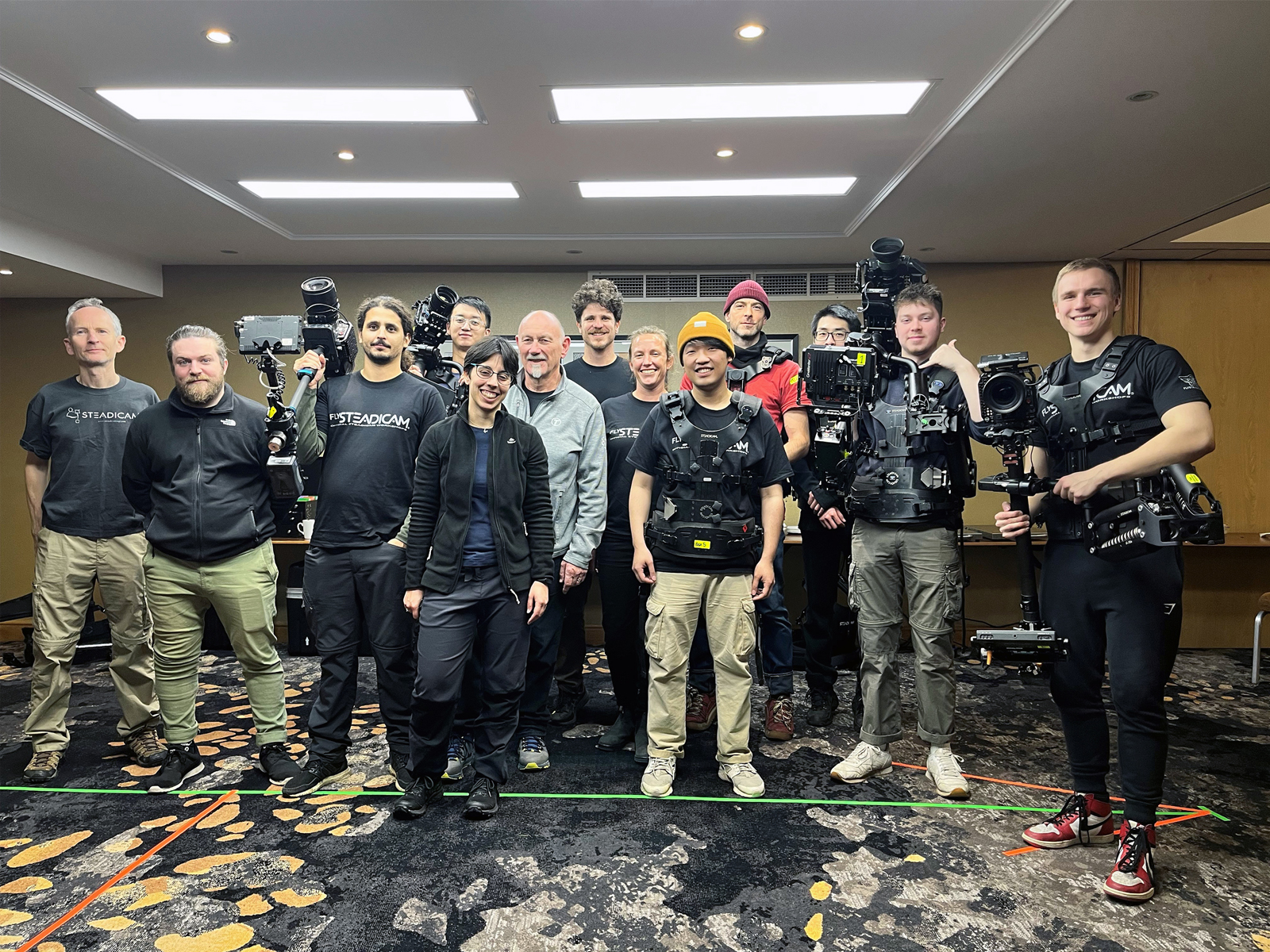
Last November 11 individuals who’d signed up to have expert tuition on handling the latest Steadicam rigs turned up in winter gear for the three day immersive course.
The tutors were Robin Thwaites, Tiffen’s Intl. Dir. of Sales, Danny Hallett, Dir. of Sales, Prof Markets, and Paul Edwards, one of the UK’s top Camera/Steadicam operators.
Some of the attendees give their names here, their status, and talk of their experience of the course:
Kit Bessant
I’m a full time film production student at Ravensbourne, my career so far has involved Camera Trainee, PA and SA work. Ideally I‘d like to be able to Cam Op, 2nd AC, 1st AC and eventually progress to Steadicam Op.
Why did you decide to participate in the Steadicam Workshop?
I’ve always had an interest and admiration for Steadicam, and since beginning studying cinematography at university, Steadicam has become more feasible as a career for me in the industry. As such I knew that my first step would be to take a Steadicam Silver Workshop to get some first hands on experience with industry standard rigs.
What did you learn about working with Steadicam from the course?
I learnt how many subtleties and nuances there are to operating Steadicam effectively, and the physical challenges that Steadicam exerts. It takes a lot of practice and after my three days, I feel competent but definitely in need of more practice.
Did you find Steadicam difficult? Compare the first day to the last day.
The physical toll of wearing the Steadicam, and learning to fit the vest right for my build was definitely tricky. Getting to grips with the natural movement of the rig was one of the biggest challenges I had to overcome as on day 1 I felt as though I was fighting against the rig’s movement. However by Day 3, I felt more comfortable with the concept of letting the rig move itself and using my hips as the guide.
What was the most surprising thing that you found out about Steadicam?
How little the operator is meant to control the sled with their hand, it’s all in the hips.
Has doing the Workshop changed your thinking about Steadicam in any way?
The workshop has demystified the Steadicam equipment, and how to begin in this profession.
What did you think about how the Workshop was run?
I thought the workshop moved swiftly and efficiently, with enough time to understand everything that was said. The instructors were full of knowledge and helpful tips, and really took the time to get to know us. Their advice was invaluable.
Do you think that you will go on to make Steadicam your career?
Undoubtedly yes, I just need to progress from Uni to working in the industry, before I am able to begin to be able to afford the equipment.
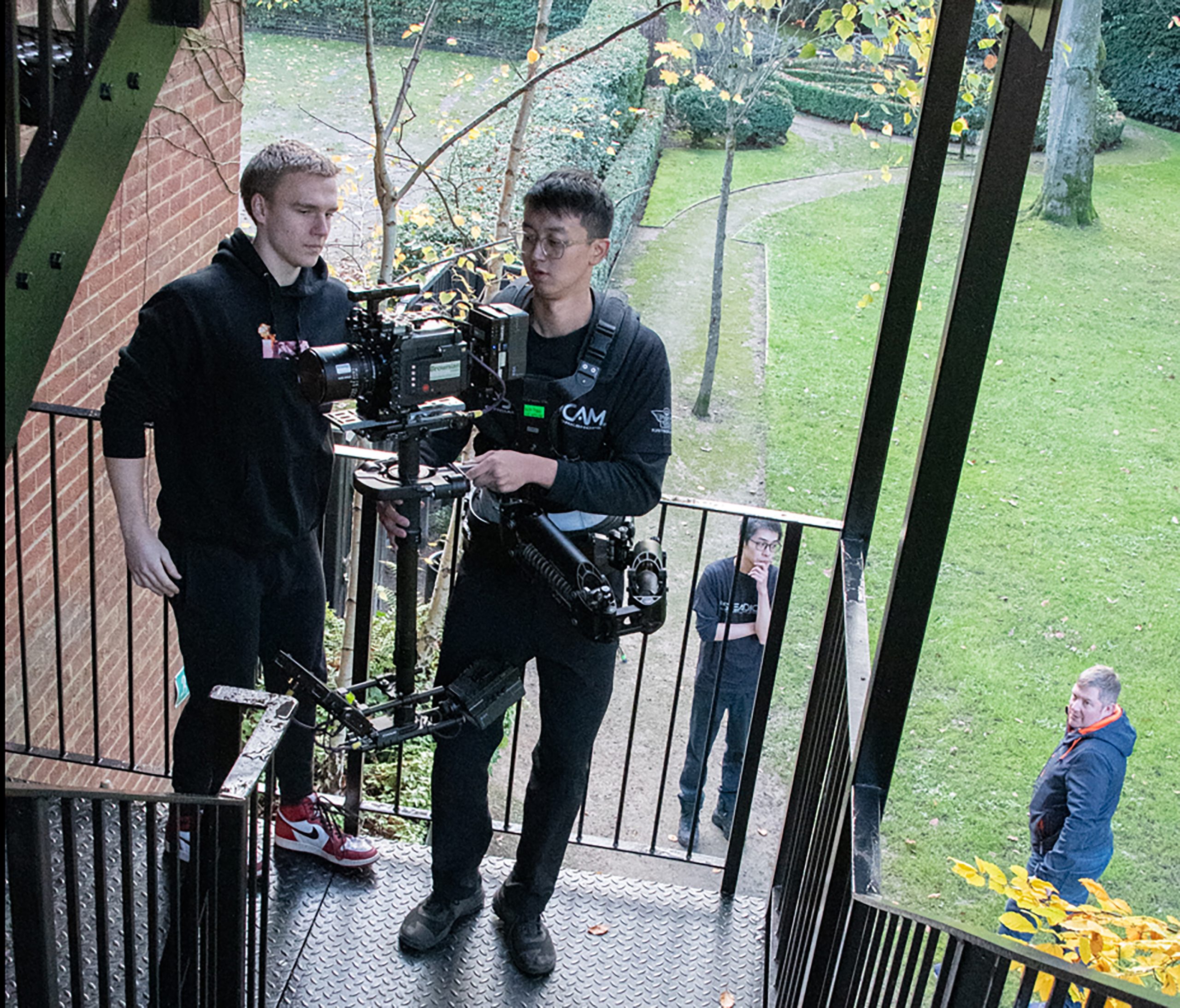
Your name and status:
Amy Yeats
I work in the camera department, mainly on feature films as a 2nd Assistant Camera. I have been in the field since 2009 after studying film in South Africa for 3 years. I would like to move on up now and am going to pursue being a Steadicam and camera operator.
Why did you decide to participate in the Steadicam Workshop?
A Steadicam Operator that I work with suggested I give it a try as I am looking to move forward with my career in camera.
What did you learn about working with Steadicam from the course?
I learned that it is physically possible for me to do Steadicam and that in order to do so, I will need to put in a lot of time and practice as much as I can in order to finesse the technical skills learned on the course. And more excitingly, that I really enjoy it.
Did you find Steadicam difficult? Compare the first day to the last day.
Initially yes. It felt quite foreign at first, but the more I pursued, the more comfortable I felt and I was able to understand where I was going wrong which I think is quite a positive place to be after a 3 day course. With practice, I believe it will feel a lot more natural and seeing the progression from day 1 to day 3, I’m confident of this.
What was the most surprising thing that you found out about Steadicam?
The fact that I can carry it. J
Has doing the Workshop changed your thinking about Steadicam in any way?
Yes, it has given me hope that this is a potential path in my career.
What did you think about how the Workshop was run?
I think it is a solid introduction to Steadicam with a good amount of theory and practical experience. The fact you can progress so much in 3 days suggests to me that there is a good balance between the two. I really enjoyed setting up scenes and applying the exercise drills to actual operating.
Do you think that you will go on to make Steadicam your career?
Yes, it will take a lot of practice but it is something I’d like to pursue.
Your name and status:
Jose Armengol
I have been working in the Film industry for 10years doing a combination of VFX and Camera work. I am now on the path to pursue my dream of becoming a cinematographer and Steadicam will be part of my toolkit to find a good rhythm and flow within the stories I work on.
Why did you decide to participate in the Steadicam Workshop?
I wanted to learn more about the art of Steadicam. I have been interested in trying this out for a long time and was never on time to get a space on this course. I love the long Steadicam shots in films and how they can contribute to stories.
What did you learn about working with Steadicam from the course?
This course taught me about being aware of my body’s positioning and space around me. I found that they key to good Steadicam is to have good posture, static and dynamic balance. This course was particularly good because you could reflect on your mistakes by observing how other students and operate/wear the rig.
Did you find Steadicam difficult? Compare the first day to the last day.
I found that the Steadicam was more comfortable to wear as the days passed. The weight was not an issue. The hardest part was to keep the collective focus of all the students to take the exercises seriously. Also, the fact that we had to keep re-adjusting vest and arms to the users (standard to goofy) helped me to get better understanding of how the rig needs to be on me.
What was the most surprising thing that you found out about Steadicam?
I found it more intuitive to operate as instead of using motorised gimbals. The action on operating is immediate and very responsive. It was easier to move wearing the rig and maintain good spacious awareness when filming moving subjects. It was also amazing to learn how the Volt stabiliser works and operates.
Has doing the Workshop changed your thinking about Steadicam in any way?
Yes, doing this course has definitely demystified a lot of how to operate Steadicam the correct way. Because operators make it look very easy, you won’t know until you actually try.
What did you think about how the Workshop was run?
I think the workshop was a ‘power’ course. It was a lot to take in in a very short period of time. What I found the most challenging was not having enough time to do some of the exercises. Some of them felt particularly rushed. Nevertheless, I felt that the course had a good variation of exercises to practice what was being taught by the instructors. I also walked away with good training exercises that I can do at home.
Do you think that you will go on to make Steadicam your career?
At this stage I need to train more before attempting to make it a career. I decided to purchase a second hand A15 to train at home. Steadicam is a big financial investment, I feel that I need to be more confident at executing shots and blocking scenes. I setting myself 12 months training in which I hope to operate on many low budget productions.
Would you consider taking a Steadicam Gold Workshop?
In the near future I would love to attend a Gold Workshop. I would love to train more with developing my Steadicam cinematic language and get some experienced rigging onto vehicles. The Gold Steadicam Workshop sounds particularly interesting as it is longer and 100% all about Steadicam from the minute you wake up. The thought of sharing the passion for this craft with other operators makes it another incentive to commit to a Gold Workshop as I am all up for sharing knowledge and experience with other operators.

Your name and status:
Brian Whar
I have a degree in Fine Art, worked as an artist for 5 or 6 years exhibiting worldwide and at Tate Modern amongst others. Took a bit of time off working, then got back into my first love, photography, and did a post-grad, and worked as photographer. I plan to pursue camera stabilisation work for the next 6-10 years.
Why did you decide to participate in the Steadicam Workshop?
I’ve worked as a photographer for the past 11 years and over the last 4 have slowly moved to more video.
I’ve used a Ronin Gimbal for the past 3 years, recently bought the Tiffen Steadimate and saw training as a Steadicam operator as a natural progression.
What did you learn about working with Steadicam from the course ?
There’s a wide-range of learning on the course and the instructors did a great job simplifying it as being based around preparation, practice and determination.
Firstly the technical, setting-up properly and thoroughly in advance possibly being the most important aspect before you’ve even loaded the rig on your arm.
And then that once have the full rig in action it’s evident that less is certainly more regarding the steering of the sled and camera.
Most the core principles of learning are fundamental and universal for operating the rig however the fine-tuning idiosyncrasies that each Steadicam operator has for their personal preference were only then advised and taught.
Did you find Steadicam difficult? Compare the first day to the last day.
Like anything worth doing, it was difficult as first and got less so after accepting this fact.
The more difficult something is, the more gratifying it is when one sees any advances of competence.
I found the first day very much different to the last – physically and even more so mentally.
The first day was almost like unlearning any pre-conceptions I may have already had then acknowledging the difficulties in order to make them not so.
It felt like a case of incremental bit by bit of improvements throughout the course which obviously contributed to my level of achievement seeming like giant steps comparing the first day to the last.
What was the most surprising thing that you found out about Steadicam?
It’s hard in all the ways I thought it would be easy and easy in all the ways I thought it would be hard. I originally thought the meticulous tick-list of preparation of balancing, adjustments and technicalities required before use would be a little daunting but it isn’t – and I thought the actual use of the rig in action would be more rigorous and require more strength and control…and it doesn’t.
Has doing the Workshop changed your thinking about Steadicam in any way?
It felt like the last, albeit large piece of the jigsaw required for practising by myself.
With the skills taught plus the encouragement and constructive guidance I now feel both mentally and physically competent enough to develop my skills in my own time.
I’ve read the Steadicam Operators Handbook and watched plenty of video tutorials, and nothing beats being hands-on with the kit it’s self, however even more so was the guidance and advise from the instructors and their vast amount of experience and knowledge.
What did you think about how the Workshop was run ?
I came away with pages and pages of notes, and I had a general feeling of enthusiasm running through the course, that remains with me now.
Each step throughout the course was broken down into bite-sized advice only relevant at that point, therefore the learning didn’t ever feel overwhelming and daunting.
All the teaching and learning was presented clearly and what felt like the exact right order relevant to what came before and after, all explained in a simple, friendly, effective manner. Proper value for money.
Do you think that you will go on to make Steadicam your career?
I plan for it to be very much a part of it, alongside other types of camera stabilisation work.
Would you consider taking a Steadicam Gold Workshop?
It could be said the purpose in life is to have purpose…and the fundamentals of purpose require goals and aims. The Silver Workshop taught and transferred a solid foundation of skills that enabled me/us to use the equipment in a capable and accurate manner.
The Gold Workshop is certainly something to aim towards in due time whilst providing purpose and motivation to get to the standard to be even contemplated to be accepted on the course (12-18 months I reckon). It’s a ‘Yes’.
Your name and current status:
Yichao Chen
I have been working in senior positions of the Camera Department since 2018 in China. My expertise spans commercial work, documentary, indie films and micro-budget projects, with special focus on fashion and advertising. In addition to professional work, I am also earning a Master’s Degree in Filmmaking at the London Film School. For the future, I hope to enter the film and television industry and become a member of the camera department in the UK.
Why did you decide to participate in the Steadicam Workshop?
How to use Steadicam correctly and what it can do is fundamental for my career, and the Workshop is a fast track way to learn.
What did you learn about working with Steadicam from the course?
That Steadicam is all about balance instead of force. I don’t need to use brute force to control it. It’s a combination of skill and technique. This is just like being a friend with Steadicam, grasping the distance and discretion, and then being able to cooperate with each other.
Did you find Steadicam difficult? Compare the first day to the last day.
Not really. It is a device that practice makes perfect. I can sense the way it is used, but it takes time to control the framing accurately.
What was the most surprising thing that you found out about Steadicam?
It is very friendly to people who are light and not strong. Usually, some operators I know have lumbago due to Steadicam, but I found that it is actually the wrong posture that would be the cause.
Has doing the Workshop changed your thinking about Steadicam in any way?
At the beginning, my understanding of Steadicam was limited to missionary shot. However, I learned different skills of Steadicam in the workshop. It is an efficient and fast piece of kit, and can change at will, and skillfully complete all kinds of difficulties.
What did you think about how the Workshop was run?
Clearly and efficiently. Master the core concepts through practice and preaching.
Do you think that you will go on to make Steadicam your career?
Yes, Steadicam will appear in my career. I don’t necessarily need to operate Steadicam, but knowing and understanding Steadicam provides another option for me in designing shots.

–
The attendees share their thoughts on taking the course – interviews by Mel Noonan – stylusMC

